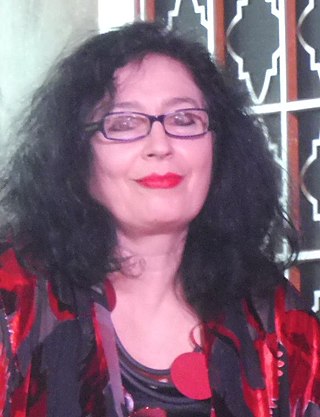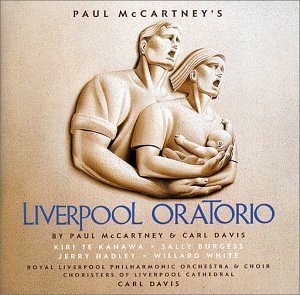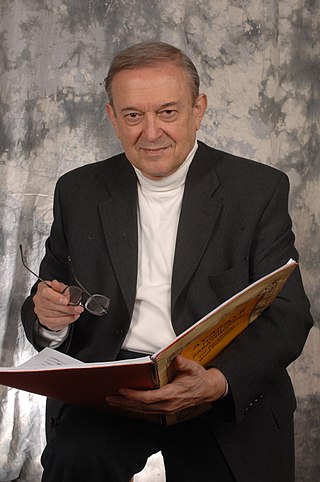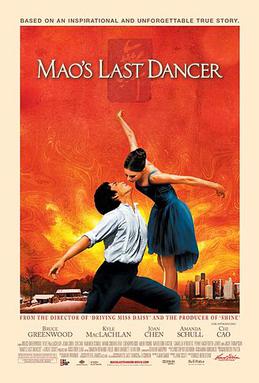
Elena Davidovna Kats-Chernin is an Uzbek-born Australian composer and pianist, best known for her ballet Wild Swans.

William Grant Still Jr. was an American composer of nearly two hundred works, including five symphonies, four ballets, nine operas, over thirty choral works, art songs, chamber music, and solo works. Born in Mississippi and raised in Little Rock, Arkansas, Still attended Wilberforce University and Oberlin Conservatory of Music as a student of George Whitefield Chadwick and then Edgard Varèse. Because of his close association and collaboration with prominent African-American literary and cultural figures, Still is considered to be part of the Harlem Renaissance.
Ballet as a music form progressed from simply a complement to dance, to a concrete compositional form that often had as much value as the dance that went along with it. The dance form, originating in France during the 17th century, began as a theatrical dance. It was not until the 19th century that ballet gained status as a "classical" form. In ballet, the terms 'classical' and 'romantic' are chronologically reversed from musical usage. Thus, the 19th century Classical period in ballet coincided with the 19th century Romantic era in music. Ballet music composers from the 17th–20th centuries, including the likes of Jean-Baptiste Lully, Pyotr Ilyich Tchaikovsky, Igor Stravinsky, and Sergei Prokofiev, were predominantly in France and Russia. Yet with the increased international notoriety seen in Tchaikovsky's and Stravinsky's lifetime, ballet music composition and ballet in general spread across the western world.
Daniel Lentz is an American composer and artist.

Joseph Deems Taylor was an American composer, radio commentator, music critic and author. Nat Benchley, co-editor of The Lost Algonquin Roundtable, referred to him as "the dean of American music." He was elected a member of the American Philosophical Society in 1934.

Paul McCartney's Liverpool Oratorio is a live album by Paul McCartney and Carl Davis, released in 1991. It is McCartney's first major foray into classical music. Composed in collaboration with Carl Davis to commemorate the Royal Liverpool Philharmonic Orchestra's 150th anniversary, the project received media attention upon its unveiling in June 1991.

Symphonic Dances, Op. 45, is an orchestral suite in three movements completed in October 1940 by Russian composer Sergei Rachmaninoff. It is his final major composition, and his only piece written in its entirety while living in the United States.
Sergei Prokofiev's Quintet in G minor, Op. 39 is a piece of chamber music for oboe, clarinet, violin, viola and double bass, written in 1924. The quintet, closely related to Prokofiev's ballet, Trapèze, contains six movements and lasts 20–25 minutes.
Tevfik Akbasli is a Turkish composer.

Loris Ohannes Chobanian was an American-Armenian composer of classical music, conductor, and guitar and lute teacher and performer. He served as Professor of Composition as well as Composer-in-Residence at Baldwin-Wallace College Conservatory.

Mao's Last Dancer is a 2009 Australian film based on professional dancer Li Cunxin's 2003 autobiographical memoir of the same name. Li Cunxin is portrayed by Birmingham Royal Ballet Principal Dancer Chi Cao, Australian Ballet dancer Chengwu Guo and Huang Wen Bin. The film also stars Bruce Greenwood, Kyle MacLachlan, Joan Chen and Amanda Schull.
Patrick Greene is an American composer and performer of contemporary classical music. A lifelong resident of New England, he has been based in Boston, Massachusetts, since 2008.
Rodeo is a ballet composed by Aaron Copland and choreographed by Agnes de Mille, which premiered in 1942. Subtitled "The Courting at Burnt Ranch", the ballet consists of five sections: "Buckaroo Holiday", "Corral Nocturne", "Ranch House Party", "Saturday Night Waltz", and "Hoe-Down". The symphonic version omits "Ranch House Party", leaving the other sections relatively intact.
Águas da Amazônia, Sete ou oito peças para um balé is a 1993–99 musical composition by the American contemporary classical composer Philip Glass. Its first recording was performed by the Brazilian instrumental group Uakti.

Lenox Avenue is a series of ten orchestral episodes and a finale composed in 1937 by American composer William Grant Still. The composition is for orchestra, chorus and announcer; the narration was written by Verna Arvey, wife of composer Still. The first performance was broadcast nationally on radio on May 23, 1937, conducted by Howard Barlow. A related ballet version was composed in 1938, and is about twenty-one minutes long.

Symphony No. 3, also known as Symphony No. 3"The Sunday Symphony", is a 1958 composition in four movements by American composer William Grant Still. The work was first performed on February 12, 1984 by the North Arkansas Symphony Orchestra conducted by Carlton Woodsi. The symphony is about eighteen minutes long.

Sahdji is a 1930 ballet composition in two-movements by American composer William Grant Still. The ballet was first performed in 1931 under the direction of Howard Hanson at the Eastman School of Music. The work is about twenty minutes long.

La Guiablesse is a 1927 ballet composition in nine-movements by American composer William Grant Still. The ballet was first performed in 1933 by Howard Hanson and Thelma Biracree at the Eastman School of Music in Rochester, New York, and Ruth Page in Chicago, Illinois. The work is about nineteen minutes long.

Africa is a 1930 symphonic poem in three movements by American composer William Grant Still. The work, originally scored for chamber orchestra, was first performed in 1930 by French flautist Georges Barrère and, in a full orchestra version, by Howard Hanson on October 24, 1930, at the Eastman School of Music in Rochester, New York. The work is about twenty-eight minutes long.

Blue Steel is a 1934 opera by American composer William Grant Still. Overall, the music assumes a jazz form, harmonically and rhythmically, although at other times, the music merges into the form of a Negro spiritual.







